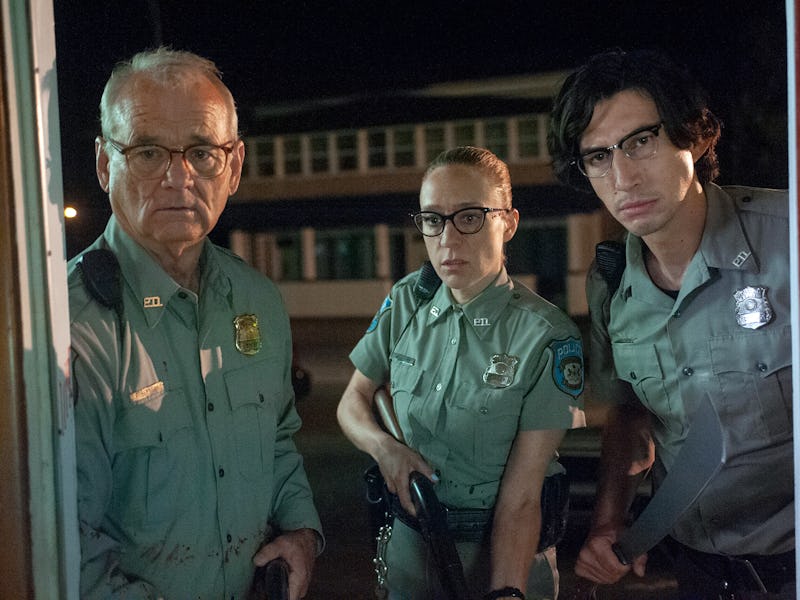
In The Dead Don’t Die, the zombie movie from indie darling Jim Jarmusch that premiered Friday, the dead aren’t raised by a curse, a drug, or a disease. The culprit is something far more real — even if the most scientifically plausible scenario would play out quite differently than what’s depicted in the film.
Spoilers for The Dead Don’t Die ahead.
In a commentary on the collective denial of the scientific consensus, Jarmusch wrote a unique origin story for his zombies. Instead of being reanimated by incantations from the Necronomicon or by a diseased monkey escapee, they are called forth by climate change. Specifically, they’re the end result of a chain of events set in motion by a particularly disastrous form of natural resource extraction.
In an effort to fulfill the energy needs of an increasingly populated world, energy companies in The Dead Don’t Die resort to “polar fracking”: hydraulic fracturing for oil and gas but at the Earth’s North and South Poles.
Long story short, this process disrupts the Earth’s rotational axis, making days and nights unnaturally long and somehow opening the planet up to the mysterious influence of some kind of space rays from the moon.
It’s a thoughtful allegory for the ongoing climate crisis, as the characters argue over whether polar fracking is really hurting anything, only it doesn’t make any sense. Jarmusch missed a great opportunity to riff on a real phenomenon that’s happening. Which is the fact that ancient viruses and bacteria, as well as less-ancient toxins, are resurfacing as the climate crisis causes the permafrost to thaw.
Officer Ronnie Peterson (Adam Driver) knows things are not going well from the get-go.
In a 2014 study in Proceedings of the National Academy of Sciences, for instance, a team of researchers warmed up a 30,000-year-old virus recovered from Siberian permafrost and found it was still infectious. In another, more drastic example, a 2016 anthrax outbreak among nomadic reindeer herders in the Arctic Circle was traced to long-frozen reindeer carcasses that had thawed from the tundra during a period of record high temperatures. More than 2,300 reindeer had to be euthanized as a result, and one boy died from the illness.
These are just a couple of the many documented cases of diseases emerging from ice deposits that have remained frozen for as long as anyone can remember.
Besides the possible stories that could start with ancient viruses thawing from the ice caps, Jarmusch also missed out on the opportunity to have nuclear waste or other toxic chemicals cause an unstoppable zombie onslaught.
As the BBC pointed out on Monday, Swedish Nuclear Waste Management is a member of the Global Terrestrial Network for Permafrost, suggesting that the organization relies on permafrost to store nuclear waste. The agency didn’t respond to the BBC’s requests for comment, but suffice it to say, a zombie movie about permafrost melting to expose nuclear waste that turns the world into zombies would be really cool and original — not to mention au courant.
Throughout the film, characters debate what's happening in a clear parallel to the current discourse over anthropogenic climate change.
This isn’t to say that Jarmusch totally missed the mark with The Dead Don’t Die. The film hints that polar fracking is the reason the Earth has stopped spinning and the moon has started turning colors that awaken the dead. Tied up in that process is the debate between conservatives and liberals over whether polar fracking is really to blame. In this sense, the film casts the climate change “debate” into sharp relief, a life-and-death matter turned into a political issue that can be voted yea or nay.
As Inverse wrote in a review of the film, this critique gets a bit muddled up with the zombie trope of mindless consumerism, a classic element of zombie movies.
And look, this isn’t to say that a zombie movie, a movie predicated on the notion that the dead rise to walk the Earth, needs to be scientifically accurate. None of us are that pedantic. But if you’re going to make a movie about climate change, why not make it about one of the weird, lesser-known effects that could actually make sense to the plot?
Just sayin’.